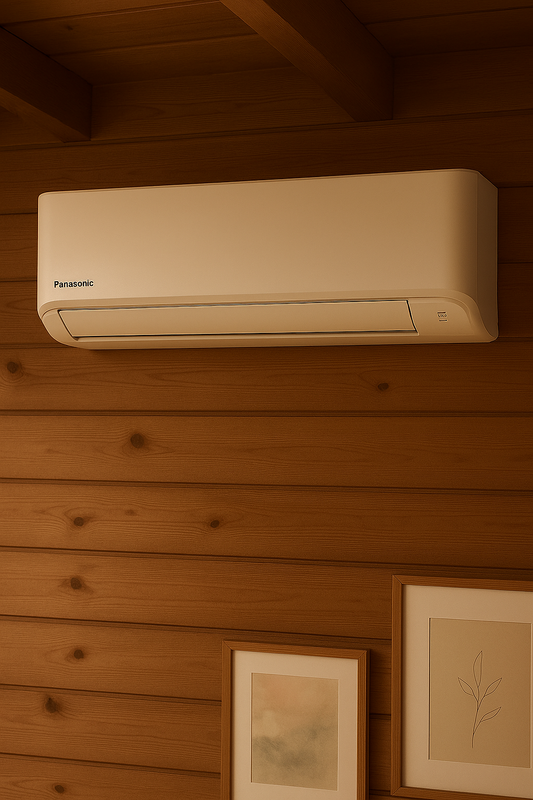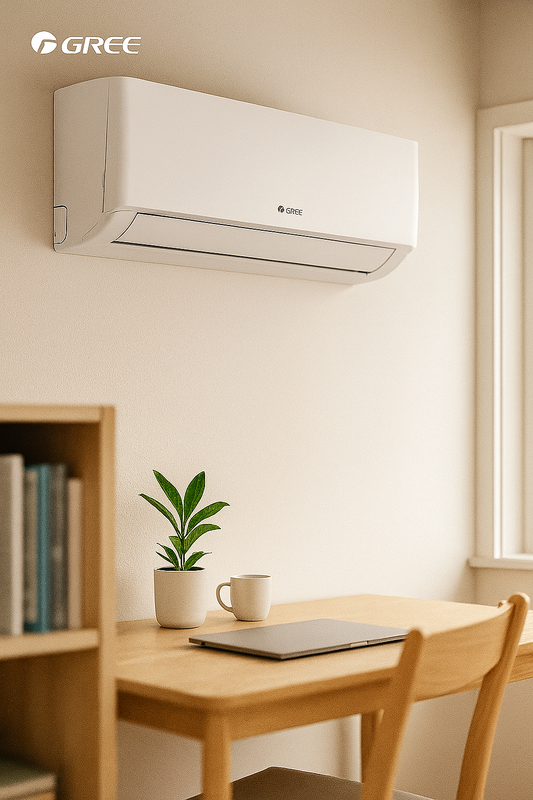Installation av bergvärmepumpar: En komplett guide
Inledning
Installation av bergvärmepumpar är en effektiv och hållbar metod för att producera värme och kyla till bostäder och kommersiella fastigheter. I denna artikel kommer vi att utforska processen för att installera bergvärmepumpar, dess fördelar, användningsområden och relaterade tekniker.
Definition och bakgrund
En bergvärmepump använder sig av den naturliga värmen som lagras i marken för att producera värme och varmvatten. Genom att utnyttja den konstanta temperaturen under markytan kan bergvärmepumpar erbjuda en stabil och energieffektiv värmekälla året runt.
Installationen av en bergvärmepump innefattar vanligtvis att en värmepumpsenhet placeras i marken utanför bostaden eller fastigheten. Genom en serie avledande rör och en värmepump inomhus kan värmen överföras från marken till bostaden.
Fördelar och användningsområden
En av de främsta fördelarna med bergvärmepumpar är deras höga energieffektivitet. Genom att utnyttja den naturliga värmen i marken kan bergvärmepumpar producera betydligt mer energi än de förbrukar, vilket resulterar i lägre energikostnader för användaren.
Utöver energibesparingar erbjuder bergvärmepumpar också hållbara uppvärmningslösningar som minskar beroendet av fossila bränslen och därmed minskar den totala miljöpåverkan.
Användningsområden för bergvärmepumpar sträcker sig från privata bostäder till kommersiella fastigheter och offentliga byggnader. Deras flexibilitet och långsiktiga kostnadsbesparingar gör dem till ett attraktivt alternativ för olika typer av fastigheter.
Relaterade tekniker, begrepp eller variationer
En vanlig variant av bergvärmepumpar är luft-vattenvärmepumpar som utnyttjar den omgivande luftens värme istället för markvärmen. Även om luft-vattenvärmepumpar kan vara enklare att installera och mer lämpliga för vissa fastigheter, har de inte samma höga energieffektivitet som bergvärmepumpar.
En annan relaterad teknik är solvärmepumpar som kombinerar solenergi med värmepumpsteknik för att producera värme och varmvatten. Dessa system kan komplettera bergvärmepumpar och erbjuda en ännu mer hållbar energilösning.
Vanliga frågor (FAQ)
-
Hur djupt grävs rören ner vid installationen av en bergvärmepump?
Vid installationen grävs rören vanligtvis ner mellan 100-200 meter beroende på markförhållandena. -
Är bergvärmepumpar lämpliga för alla typer av fastigheter?
Bergvärmepumpar kan anpassas till de flesta fastigheter, men det är viktigt att genomföra en markundersökning för att bedöma lämpligheten. -
Vilka underhållskrav har bergvärmepumpar?
Bergvärmepumpar kräver minimalt underhåll, vanligtvis bestående av regelbunden rengöring av filter och kontroller av vätskenivåer.
Sammanfattning
Installation av bergvärmepumpar erbjuder en hållbar och energieffektiv värmelösning för bostäder och kommersiella fastigheter. Genom att utnyttja den naturliga värmen i marken kan bergvärmepumpar erbjuda långsiktiga kostnadsbesparingar och minska miljöpåverkan. Med rätt installation och underhåll kan bergvärmepumpar vara en pålitlig värmekälla under många år framöver.
Installation Process
The installation process of a geothermal heat pump involves several key steps. First, the location for the heat pump unit is determined, typically outside the property. Then, a series of boreholes are drilled into the ground to accommodate the loop system. The heat pump unit is then installed, and the loop system is connected, allowing for the transfer of heat from the ground to the property.
Energy Efficiency Considerations
When considering the installation of a geothermal heat pump, it's important to evaluate the energy efficiency benefits. The system's coefficient of performance (COP) and heating seasonal performance factor (HSPF) are key indicators of its efficiency. Understanding these factors can help property owners make informed decisions about the potential energy savings associated with geothermal heat pumps.
Case Study: Residential Installation
In a residential setting, the installation of a geothermal heat pump can significantly reduce heating and cooling costs over time. For example, a homeowner in a moderate climate may experience substantial energy savings compared to traditional heating and cooling systems. Additionally, the quiet operation and minimal maintenance requirements contribute to the overall appeal of geothermal heat pumps for residential use.
Commercial Applications
Geothermal heat pumps are also well-suited for commercial properties, offering long-term benefits such as reduced operational expenses and a smaller environmental footprint. From office buildings to industrial facilities, the installation of geothermal heat pumps can align with sustainability goals and provide a reliable heating and cooling solution for diverse commercial applications.
Enhanced Geothermal Systems
Enhanced Geothermal Systems (EGS) represent an advanced application of geothermal technology, involving the creation of engineered reservoirs deep underground. The installation process for EGS involves hydraulic stimulation and the circulation of water through the hot rock formations to harness geothermal energy. This innovative approach expands the potential geographical locations for geothermal energy production.
Exploring Geothermal Tax Incentives
Property owners considering the installation of geothermal heat pumps may also benefit from exploring available tax incentives and rebates. In certain regions, there are federal, state, or local programs that provide financial incentives for the installation of renewable energy systems, including geothermal heat pumps. Understanding these incentives can further enhance the appeal of geothermal heat pump installations.
Conclusion
The installation of geothermal heat pumps offers a sustainable and efficient heating and cooling solution for both residential and commercial properties. By leveraging the natural heat stored in the ground, geothermal heat pumps provide long-term cost savings and reduce environmental impact. With proper installation and ongoing maintenance, geothermal heat pumps can serve as a reliable source of heating and cooling for many years to come.
Environmental Impact
One of the key advantages of geothermal heat pump installations is their minimal environmental impact. By utilizing the Earth's natural heat, these systems reduce reliance on traditional energy sources, thereby lowering greenhouse gas emissions and contributing to overall environmental sustainability.
Geothermal Heat Pump Maintenance
Proper maintenance is essential for ensuring the optimal performance and longevity of geothermal heat pump systems. Regular tasks include checking the fluid levels, inspecting the loop system for any potential issues, and ensuring that the heat pump unit is operating efficiently. Additionally, periodic professional inspections can help address any maintenance requirements promptly.
Geothermal Heat Pump Versus Traditional HVAC
Comparing geothermal heat pump installations with traditional HVAC systems provides valuable insights into the long-term benefits of geothermal technology. Factors such as energy consumption, operational costs, and environmental impact can be evaluated to showcase the advantages of geothermal heat pumps over conventional heating and cooling methods.
Geothermal Heat Pump Performance Monitoring
Ongoing performance monitoring is crucial for gauging the effectiveness of geothermal heat pump installations. Property owners can utilize energy monitoring systems to track the system's efficiency, energy usage patterns, and environmental impact, allowing for adjustments as needed to maximize performance.
Geothermal Heat Pump Installation Considerations
Before initiating the installation process, property owners should consider various factors such as soil composition, available space, and local regulations. Conducting a thorough site assessment can help determine the feasibility and optimal approach for installing a geothermal heat pump system.
Geothermal Heat Pump Loop Configurations
Geothermal heat pump systems offer different loop configurations, including horizontal, vertical, and pond/lake loops. Each configuration has distinct advantages based on property size, geological features, and water access. Understanding the implications of each loop configuration is essential for designing an efficient and effective installation.
Geothermal Heat Pump Zoning and Distribution
Efficient zoning and distribution systems play a crucial role in maximizing the benefits of geothermal heat pump installations. Properly designed zoning and distribution can optimize comfort levels, minimize energy consumption, and enhance the overall performance of the system for both residential and commercial properties.
Geothermal Heat Pump Monitoring and Control Systems
Integrating advanced monitoring and control systems can enhance the operational efficiency and performance of geothermal heat pump installations. Smart thermostats, remote monitoring capabilities, and automated controls contribute to precise temperature management and energy optimization, ultimately benefiting property owners.
Geothermal Heat Pump Retrofitting
For existing properties, the retrofitting of geothermal heat pump systems presents an opportunity to transition from conventional heating and cooling methods to sustainable geothermal technology. Retrofitting considerations include space availability, ductwork modifications, and system compatibility to ensure a seamless transition.
Geothermal Heat Pump Industry Innovations
Ongoing advancements in geothermal heat pump technology continue to drive innovation within the industry. From improved heat exchanger designs to enhanced system integration with renewable energy sources, staying informed about the latest innovations can influence decision-making for geothermal heat pump installations.
Geothermal Heat Pump Performance Validation
Post-installation performance validation and testing are essential for confirming the operational efficiency and compliance of geothermal heat pump systems. Conducting performance assessments can provide valuable insights into the system's functionality, energy savings, and environmental impact, ensuring that it meets or exceeds expected standards.
Geothermal Heat Pump Financing and Incentives
Exploring financing options and available incentives for geothermal heat pump installations can facilitate cost-effective implementation. Property owners can investigate financing programs, tax credits, and utility incentives that support the adoption of geothermal technology, contributing to overall affordability and return on investment.



